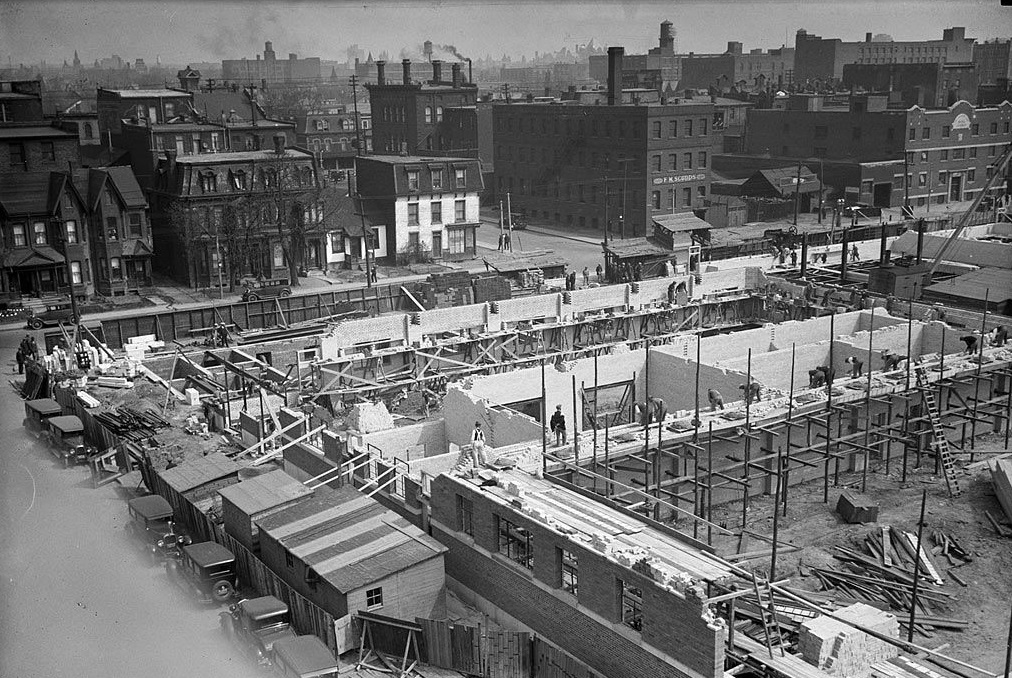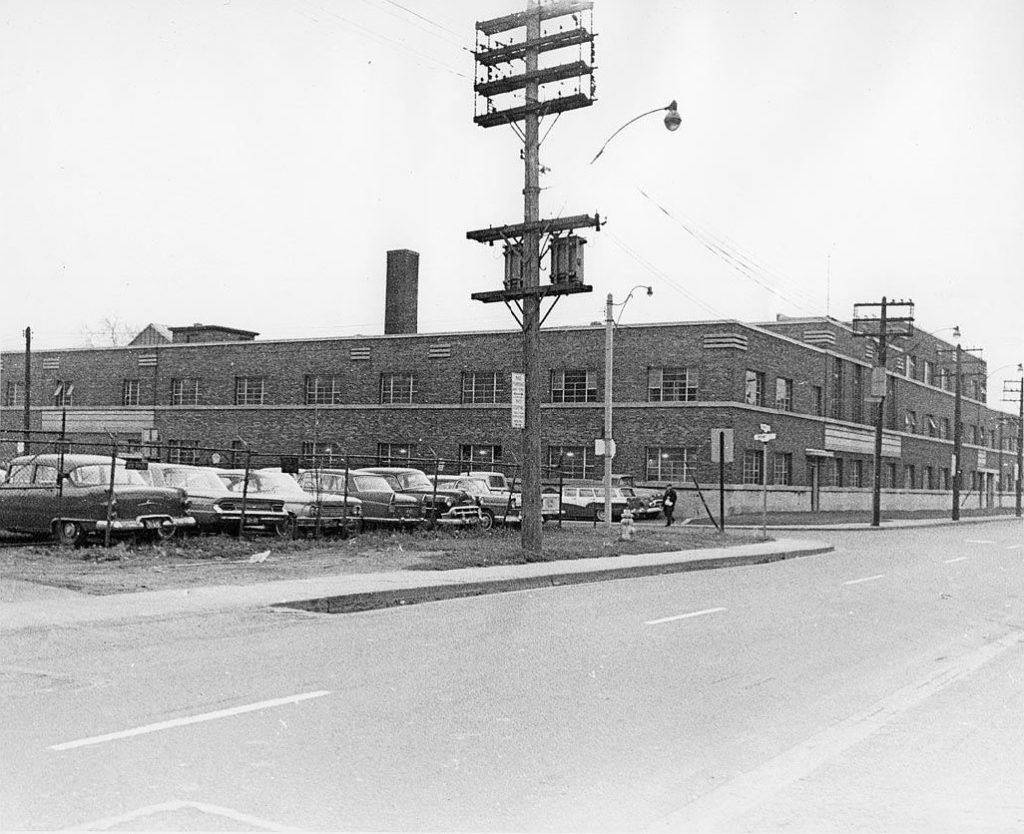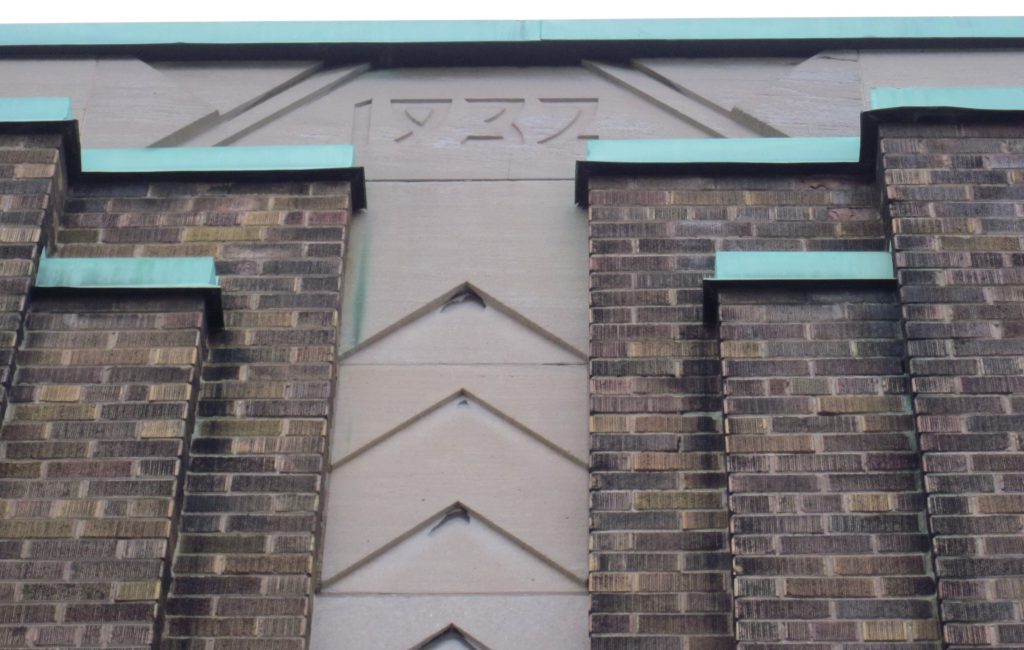“When I moved to this neighbourhood 16 years ago, its future wasn’t clear. But it sure is now”
————————————————————————–

When history buff and author Doug Taylor strolls past the Waterworks building, he can’t help but see it as a lesson in Toronto’s architectural and social history.
“It’s Depression-era architecture,” he explains. “There are touches of Art Deco architecture, but it’s modest, because it was the Depression. It was a make-work project to create jobs, but there are some nice details, like where they employed Queenston limestone. This was still an era when money and effort went into public buildings, to make them attractive.”
For this former teacher and author of several books about Toronto’s history, walking the streets is a form of research and a meditation on the city’s storied past. In fact, he and his partner moved to the Garment District – right around the corner from the Waterworks building –16 years ago so they could be in a walkable community.
The Toronto Archives are a regular stop on Taylor’s circuit so he came prepared with a folder of vintage photographs showing the site before, during, and after construction of the Waterworks building in 1932.

Waterworks area was once residential
“This was a residential area before the small commercial enterprises moved in,” says Taylor, pointing to a picture of the construction site of the Waterworks building. The streets nearby were lined with modest houses, small factories and parking lots.
What was left in the 1930s, says Taylor, was a working class neighbourhood. These were not prosperous families and there was no longer enough population to support St. Andrew’s Market – which had once been Toronto’s second largest food market where farmers visited with horses and carts full of meat, milk and eggs, vegetables, and fruits. In 1932, the market was demolished to make room for the Waterworks building.
A beautifully designed maintenance plant was well suited for the increasingly industrialized neighbourhood that grew up around it during latter part of the 20th century. “That probably helped the building survive for more than 80 years”, notes Taylor.
“We lost so many buildings in the ‘60s, after the St. Lawrence Seaway opened. Development came to this area because ships could come up the seaway to Toronto, and many buildings were demolished. As the economy picked up again after the Depression”, says Taylor, “the last of the homes in the Waterworks neighbourhood were torn down to make parking space for workers employed in the district.”

Waterworks neighbourhood has been reclaimed
Taylor explains that the Waterworks redevelopment is part of a larger movement to reclaim the district’s residential past. “In 1930, no one could have envisioned that this area would go residential again. Even when I moved to this neighbourhood 16 years ago, its future wasn’t clear. But it sure is now”, says Taylor, “and bringing residences back to the area is a really good reason to restore a heritage building like Waterworks.”

“Developers have discovered the historical value of buildings, and this is a phenomenal space,” says Taylor. “It’s three stories high and there are skylights with light pouring in. It’s always ideal to have natural light, especially in a climate like this.”
Walkability is attractive for young and old
“The big attraction of the neighbourhood”, says Taylor, “is its walkability”. Residential development has attracted young people, who don’t want cars, because of that feature. “I’m the oldest in my building,” he laughs, adding that he gets great tech advice from his neighbours, and that his age doesn’t stop him from being a regular in the circuit of his building’s social events.
Increasingly, Taylor observes more retirees are moving to the neighbourhood, where they can walk to their daily destinations and depend on transit for longer journeys. “You see a mixture of first-time buyers and an older demographic now that it’s becoming less risky to invest in the area. The population is diverse and the range of businesses and restaurants reflect that.”
For more insight into the architectural past of the Garment District neighbourhood – and to plan a walking tour – you can see articles on Taylor’s Historic Toronto blog about the Waterworks Building.


